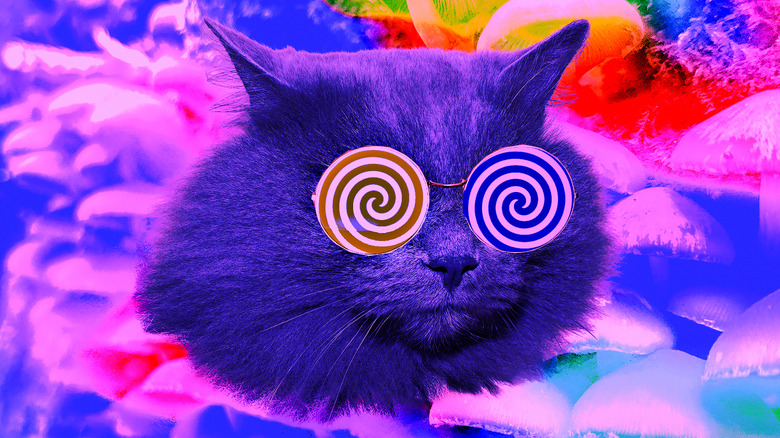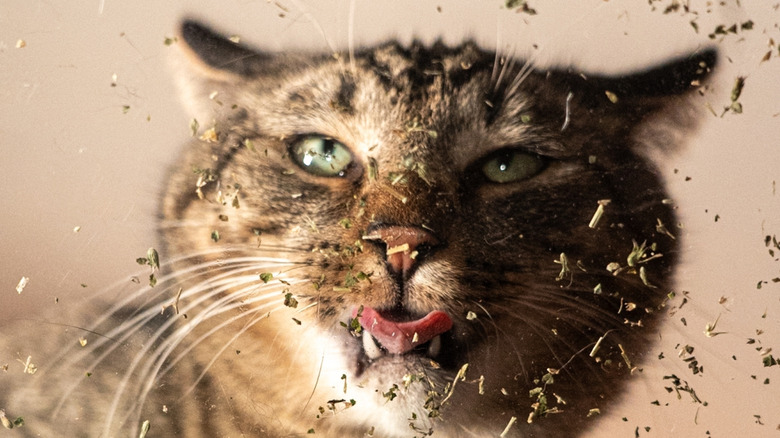How High Does Your Cat Really Get When They Eat Catnip?
If you are a cat owner or have at least watched cats in videos posted online, you've likely witnessed what happens when these animals get ahold of catnip. The way felines react to this perennial herb is slightly outside of the types of animal behavior you normally see from them.
It's commonly thought that catnip acts as a sort of hallucinogen for cats, and medical literature from 50 years ago certainly implied that was the case. A 1972 paper from the American Journal of Veterinary Research speculated that the feline catnip response could be used as a model to understand the human response to drugs such as cannabis or LSD. Although catnip won't cause feline hallucinations, it definitely has an effect on your cat.
The effects aren't the same for all cats and differ depending on how the herb gets into their bodies. The herb has more of a sedative effect when felines eat it, making them calm and relaxed. When cats smell it, though, the herb works more like a stimulant, so the animals become more hyperactive — meowing and purring, rolling around, and rubbing their bodies on whatever is nearest to them.
What is catnip and the science behind how it affects cats?
As mentioned, catnip (Nepeta cataria) is an herb, and it's part of the mint family with noticeably aromatic leaves. Unlike some hallucinogenic plants native to the United States — like several species of Psilocybes — this plant is native to Africa, Asia, and Europe. It made its way to North America with immigrant settlers, and for centuries, people were using it as an herbal medicinal tea because of its ability to relieve mild digestive discomfort and promote relaxation.
While cats seem to experience the same sedative effects when they ingest catnip, it's the volatile oil nepetalactone in the herb that makes them hyperactive when they smell it. This chemical binds to proteins in the felines' nasal tissues and stimulates their sensory neurons. That triggers a response with the olfactory bulb neurons, sending signals to the amygdala and the hypothalamus. These parts of the brain regulate behavior responses and neuroendocrine responses, respectively.
Basically, nepetalactone mimics their natural sex pheromones and taps into the cats' opioid reward systems. That's why cats can become more affectionate, playful, or even aggressive like a female in heat when they smell catnip, and even males can display these behaviors.

